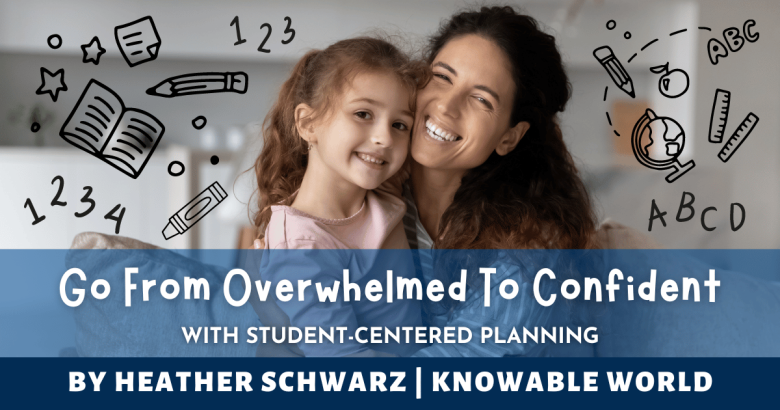-
This post is sponsored by Lone Star Homeschool Academy. Get your 14-day FREE trial!
By Heather Schwarz | Knowable World
Whether you’re brand-new to homeschooling or you’ve been doing this a few years, you may have noticed that the number of resources available for learning at home has EXPLODED.
There are so many curriculum choices for different subjects, approaches, price points, and learning styles, it can be truly overwhelming to try to sort through them all!
And not only that, but seeing all the beautiful and highly-recommended curriculum that doesn’t seem to quite match your needs can leave you feeling like you and your kids are missing out.
You may be wishing for a way to plan that will leave you feeling confident and excited about all the learning that’s about to happen in your home.
The student-centered planning process described below will help you stay 100% focused on your unique family and your goals for your homeschool, so you know exactly what you’re looking for before you even start browsing.
Researching curriculum with only a vague idea of what you need is like walking through a craft store, gazing at all the beautiful things and the projects you could do.
It feels like you need one of everything! But when you go into the store with a definite project and a shopping list, it’s much easier to find exactly what you need and get out of there without blowing your budget or feeling disappointed about all the things you won’t be able to do.
So grab a pen and a notebook and make that list before you wander into curriculum-land! Here’s what to do.
Step 1: What are your big-picture goals for your homeschool?
In this step, write down the reasons why you are homeschooling and what you want to accomplish.
Do you plan to have your children go back to school at some point (in which case you’ll need to keep them close to grade level), or are you committed to following your own path all the way through?
Is there a homeschooling model or approach that you plan to follow? This is also the place to list any requirements you need to comply with in your state or province.
Step 2: What are your child’s needs?
For each child you’ll be teaching, write down their current level in each subject along with any particular needs or gaps to be addressed this year.
Remember that one student can be at different “grade” levels in different subjects. If you aren’t sure, plan to start the year with some assessment. Write down anything you know you want to work on with them this year.
Step 3: How will you work together as a family?
If you have more than one child, write down what you want to do together as a family and what they need to work on independently.
Think about the dynamics between your children and how you need to balance time spent alone or together, as well as things like extra needs for physical stimulation or a quiet environment.
Step 4: What resources do you have to work with?
Write down the resources that you can make available for homeschooling. Of course, this includes determining your curriculum budget.
There are quality curricula available at ALL budget levels, so don’t feel that you have to stretch beyond your means to educate your child!
Try to spend at a level where you wouldn’t feel too bad about abandoning a curriculum if it doesn’t work out.
Less obvious resources to consider include things like time, transportation, and community. How much time will your schedule allow for you or other adults to spend time teaching your child?
Do you have reliable transportation to get to field trips, classes, meetups and other events?
What resources are available in your community, perhaps through your library or your local homeschool group? These are all things that can impact your curriculum choices.
Step 5: It’s FINALLY time to start looking at curriculum!
Don’t feel like you need to consider every single option in order to make a good choice. Just look for things that fit within the criteria you’ve defined, keeping in mind that there are no “perfect” curricula.
You can pick something that fits most of your items and then make adjustments so that it works for you.
When you know exactly what you need after doing the work in steps 1-4, it will be much easier to know what to adjust.
If you’re new to homeschooling, you might feel like you don’t have enough information yet to answer the questions above.
Maybe you don’t know exactly what approach you want to take, or what to cover, or exactly where your child is at in each subject. That’s ok! Homeschooling is an education for the parent, too.
Make a reasonable choice for your kids this year based on what you do know, and take lots of notes through the year about what works and what doesn’t.
It’s also a good idea to choose some books related to homeschooling for yourself to read over the course of the year.
Not only will you have a lot more to go on when it’s time to make choices for next year, but you’ll also be modelling the value of learning for your children.
Remember that curriculum is a tool to help you meet your child’s academic needs and reach your homeschooling goals.
Using student-centered planning will help you make choices you can feel confident about every year you homeschool.
Read More!
- Log in to post comments

